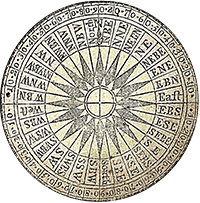John Richard Parker, (1830 – 1915), was the son of Silas and Lucinda Parker in Crawford County, Illinois. His grandfather, John Parker, was recruited to settle his family in north Texas and establish a settlement fortified against Comanche raids. The Parker family, its extended kin, and surrounding families established fortified blockhouses and a central citadel—later named Fort Parker.

The Comanche’s population had increased in large part by adopting captured women and children into the tribe, the former as child-bearing slaves and the latter as tribal members. The Comanche made little distinction from tribal members born into the tribe, and those adopted in. Children under puberty were tested for intelligence, strength and courage, and if they were satisfactory, they were adopted into the tribe and taught to be warriors.
Parker was raised by the Comanche, as were his sister and younger cousin, James Pratt Plummer. The two boys were ransomed in 1842. Plummer was returned to his grandfather and was able to re-adapt to white society, but Parker was unable to re-adjust, ran away and returned to the Comanches.
As did most young Comanche, Parker participated in many raids into Mexico during the September full moon, the “Comanche Moon,” when the Comanche raids reeked havoc from Mexico to Central America. On one of the raids, he contracted smallpox. The Comanche were returning from the raid with captives, horses, and other plunder, but they stopped briefly in west Texas, when Parker became too ill to ride. The Comanche were terrified that they, too, would catch this dreaded killer, as smallpox had killed over half the tribe several years earlier.
The Comanches left him for dead and attempted to take his wife with them. She escaped the Comanches and returned to nurse John back to health, after which he went to “live with his wife’s people.”
He joined a Mexican company in Texas to fight for the Confederacy during the Civil War before returning to Mexico. He died in 1915 on his ranch in Mexico.
Sources:
Exley, “Frontier Blood”
Hacker, “Parker, Cynthia Ann”
La Vere, “The Texas Indians”
Wikipedia
Welcome to “Sharing the Stories of History with Tim Mann”!
Meet Timothy A. Mann, a passionate historian born and raised in the heart of Shelby County, Ohio where Tim’s roots run deep in the rich soil of American history. As the author of articles and books, including “Frontier Miscellany Concerning the Miami County Ohio Militia,” “Colonel John Mann, His Kith and Kin,” and “Frontier Militia – The War of 1812,” Tim’s literary contributions have enlightened and inspired countless history enthusiasts.



